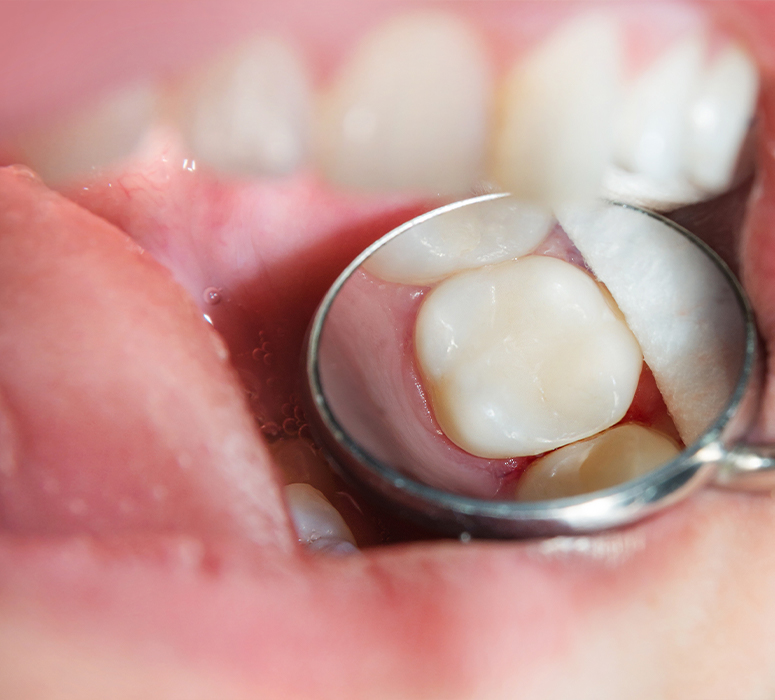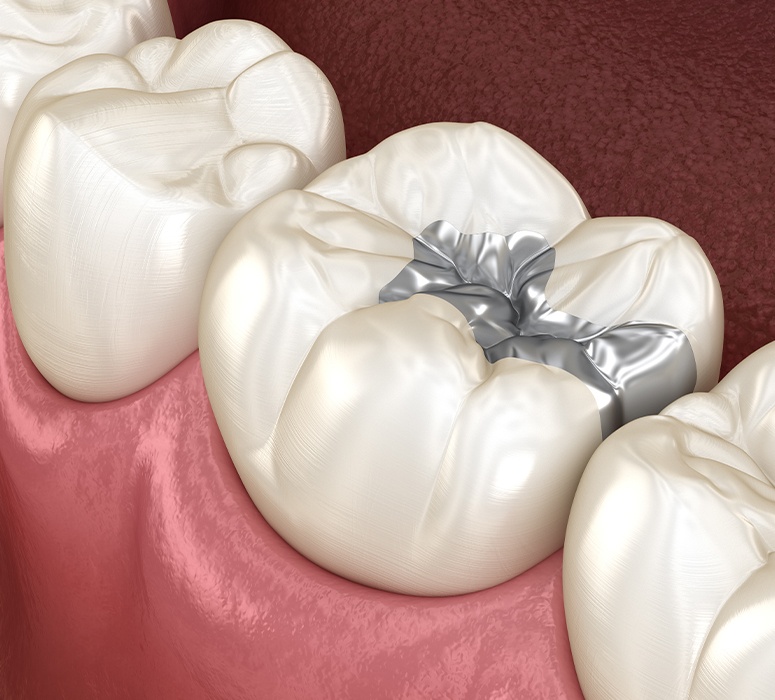Tooth-Colored Fillings – Beachwood, OH
Treating Cavities Without
Drawing Attention To Them
According to the Centers for Disease Control and Prevention, cavities are one of the top three most common oral health problems among Americans. In the past, they were treated using highly noticeable fillings made of different types of metals. Today, our team utilizes biocompatible composite resin to give you an aesthetically pleasing appearance as well as lasting protection that you can trust with tooth-colored fillings in Beachwood, OH. After your treatment, you’ll be able to feel more confident in your healthy and beautiful, cavity-free smile.
Why Choose Orange Place Family Dentistry for Tooth-Colored Fillings?
-
Discreet Cavity
Treatment -
Great For
Children & Adults -
We Accept
Dental Insurance
What is a
Tooth-Colored Filling?

A composite (tooth-colored) filling is used to repair a tooth that is affected by decay, cracks, fractures, etc. The decayed or affected portion of the tooth will be removed and replaced with a composite filling that will match the shape and color of your existing tooth.
There are many types of filling materials available, each with their own advantages and disadvantages. Composite fillings, along with silver amalgam fillings, are the most widely used today. Our Beachwood, OH dental office uses composite fillings rather than mercury/silver amalgam fillings.
There are many uses for composite or tooth-colored fillings. Some of these are:
- To repair chipped teeth
- To close spacing between two teeth
- To restore cracked or broken teeth
- To repair decayed teeth
- To restore worn teeth
How Are Composite Fillings Placed?

Composite fillings are usually completed in one appointment. While the area around your tooth is numb, Dr. Koops or Dr. Mollica will remove tooth decay as needed. Space will then be thoroughly cleaned and carefully prepared before the new filling is placed. If the decay is near the nerve of the tooth, a special medication will be applied for added protection. The composite filling will then be precisely placed, shaped, and polished, restoring your tooth to its original shape and function.
You will be given care instructions at the conclusion of your dental treatment. Good oral hygiene practices, eating habits, and regular dental visits will aid in the life of your new filling(s).
Advantages of
Composite Fillings

- Composite fillings blend in with your other teeth for a more natural appearance
- Composite fillings actually bond to your teeth, making the tooth stronger than with an amalgam filling
- Because of the tooth bonding of a composite filling, cavity preparation is more conservative with less tooth structure needed to be removed
- Composite fillings are gentler on the surrounding soft tissue
- Composite fillings do not contain mercury
Disadvantages of
Silver Fillings

- Silver amalgam fillings are less attractive than tooth-colored fillings
- Sometimes more of your tooth needs to be removed to accommodate the amalgam filling
- Silver fillings will eventually crack, allowing bacteria to get into the tooth, which can lead to more decay
- Amalgam fillings expand and contract with cold and hot foods and beverages, causing the filling to fracture and allow bacteria in
- Amalgam fillings make the tooth weaker over time
- Mercury is released during chewing with silver fillings
- Some people are allergic to mercury
I Need a Checkup & Cleaning I Need a Dentist for My Child I am Worried About Bleeding Gums I am Concerned About Sleep Apnea I Have a Cavity or Broken Tooth I am Missing One or More Teeth I am Unhappy with My Smile I Want a Straighter Smile I am Scared of the Dentist I am in Pain & Need Help View Our Services
